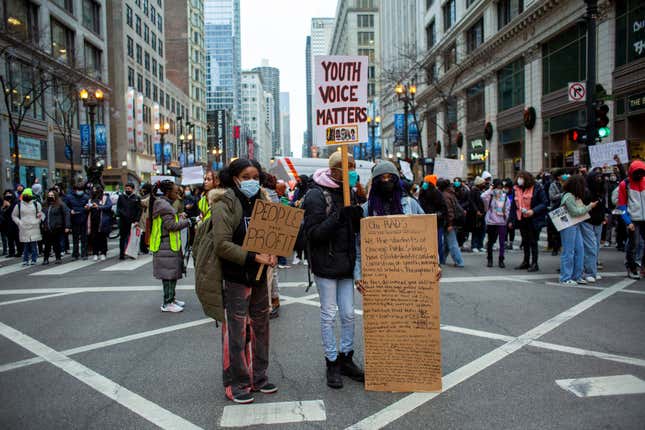
When it comes to COVID and schools, the loudest voices are always adults. Lawmakers, governors, and congressional representatives agree that kids need to learn in person–even in the storm of another surge of COVID cases due to the omicron variant. But the prominent voices that get drowned out are the young people. Along with teachers, they are the ones who have to sit in school, five days a week, without high-quality masks and proper ventilation.
It’s a two-pronged issue; a leader-driven unwillingness to temporarily revert to remote learning ignores that it needs improvement, especially for low-income students. Also, many classrooms are experiencing teaching shortages, and thus, re-opening these schools with haphazard standards is putting many people at risk. Students around the country from New York, Chicago, and Oakland have been staging walkouts to draw attention to the conditions they are facing.
While this debate moves forward, hopefully, we are listening to them. On January 11th, many students across New York City walked out before noon to protest the unsafe conditions they are facing.
A New York student spoke to the Daily News about the conditions in Brooklyn Tech. It was there that 600 students left:
“It doesn’t feel safe to be in school to be honest,’ said Danny Mui, a sophomore at the 6,000-student Brooklyn Tech. “In my classes, half the classes aren’t there. Some have COVID, some are afraid of COVID, and the school just isn’t doing anything about it.”
In Chicago, a collection of students formed Chi-RADS, a student anti-capitalist activism group. They recently gathered outside Chicago Public School District’s central offices to demand better conditions.
A Harlan High School student spoke to Courthouse News:
“We need to be remote,” one Harlan High School student said, reporting sick absences and a lack of social distancing in classrooms. “I need online school because I don’t want to die.”
The student group also released a letter of declaration calling on CEO Pedro Martinez and Chicago Department of Public Health Commissioner Dr. Allison Arwady to listen to what they have to say.
“End your use of performative language when attempting to fulfill the mayor’s political agenda. In order to genuinely take into account the best interest of students, ask us directly or include us in conversations,”
1,200 students in Oakland signed a petition noting they would stay home unless school administrators provide additional Covid protections, including more N95 masks, weekly testing, and better social distancing.
A student from Washington Preparatory High School spoke to The Guardian:
“I think the number one emotion I feel is just frustrated,” Favour Akingbemi, 17, a senior at Washington Preparatory high school in South LA, told the Guardian earlier this month. Nearly three of Akingbemi’s four high school years have been defined by Covid-19. “It’s upsetting that we’re still stuck in this pandemic,” she said.
That is just a small sample size. Students are taking to social media and organizing to draw attention to this all over the country. COVID cases and hospitalizations are still abnormally high. There’s a consensus that kids do better with in-person learning–I’m sure even the kids agree with that. Many schools in America provide needed meals like breakfast which aren’t received at home.
It’s also important to do it safely–considering that most of the students affected will be Black and people of color. Some public schools don’t have the resources to buy bulk necessities of high-quality masks. Hell, they don’t even pay the teachers and faculty well. So, the next time you see a press conference where a politician screams the need for schools to be open, be sure to note those who participate in school will need their needs met as well.
This isn’t all to say that this pandemic and the back-and-forth hasn’t been hard on parents–it absolutely has been. But there also needs to be a real push to keep kids safe from a virus that could impact them for years to come. Our students and teachers shouldn’t be sacrificial lambs for a false sense of normalcy.

